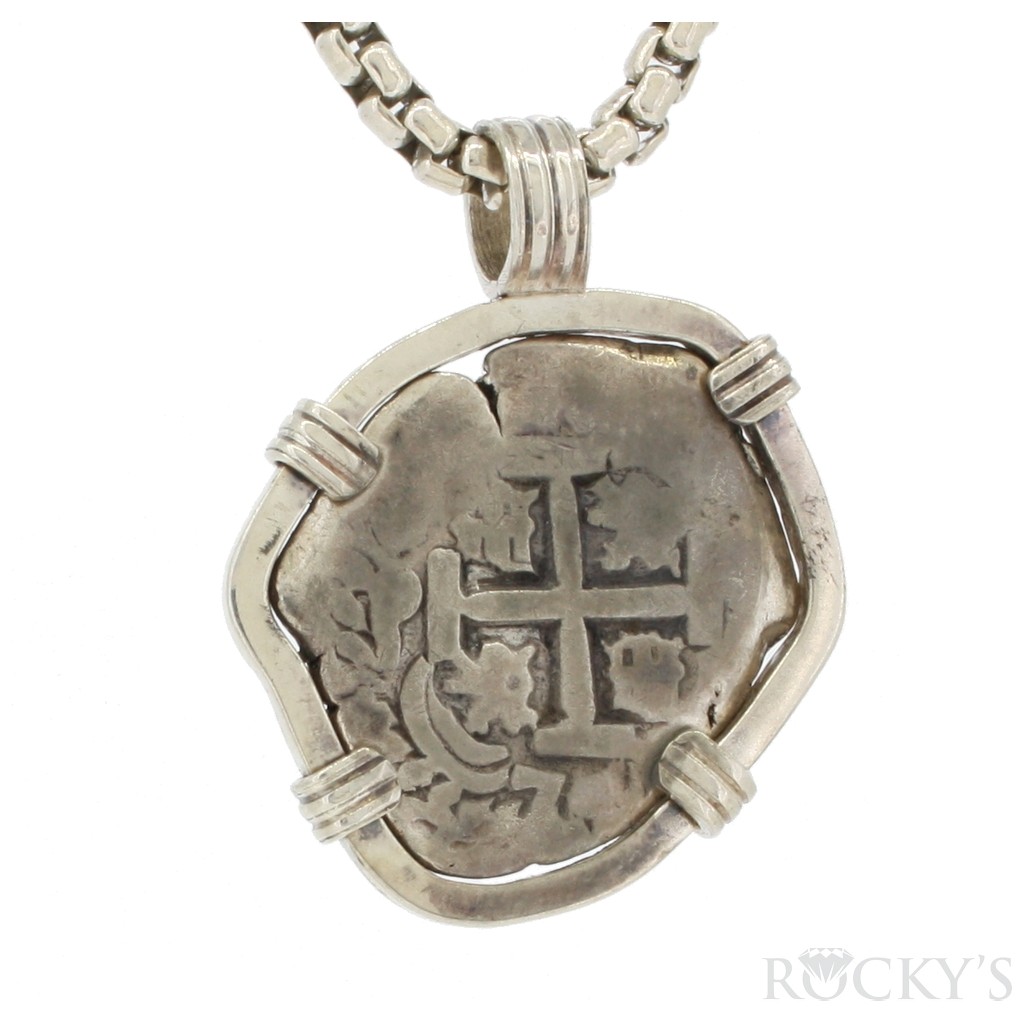Potosi 2 reales 1753 silver coin pendant
1753 Potosi, 2 Reales Spanish Silver Cob
Potosi, Bolivia Mint
Struck during the reign of: Philip V
Assayer: C
Length: 19mm | Width: 21mm
Weight w/mounting: 9.20 Grams
Description
Colonial Pillars and Waves Type: The third type of Spanish silver cob coin
Spanish Silver Cobs: 16th to 17th Century Spanish American Colonials Potosi Mint Cobs. The Potosi mint in present-day Bolivia was established in 1574 and became one of the world’s largest producers of silver coins. The colonial mints produced irregularly shaped coinage called cobs. Cob comes from the Spanish word “Cobo,” meaning bar or ingot. Silver was cut into chunks of the appropriate weight and then struck with a hammer between crude dies. The cobs’ size, shape, and impression are highly irregular, but they were the proper weight. These Cobs were produced in denominations of ¼, ½, one, two, four, and eight reales under Philip II (1556-1598) and Philip III (1598-1621). Collectively they were called “pieces of Eight”.
Often only a small portion of the image from the die was imprinted on the silver. The most important feature of any cob coin is the date. A cob coin can have up to 3 dates imprinted on it, if it has an intact date, it is worth much more than a cob where the date is missing.
These exquisite coins were once used as legal tender during the golden age of piracy and had a rich history of intrigue, danger, and treasure. International traders widely used Spanish Silver Cobs, and the American colonies accepted them as currency. The popularity of these coins made them a prime target for pirates who would often plunder Spanish treasure ships to seize their precious cargo. Pirate-themed movies, books, and games feature the Spanish Cob coins as a famous icon of the Golden Age of Piracy.
Reviews
No customer reviews for the moment.




